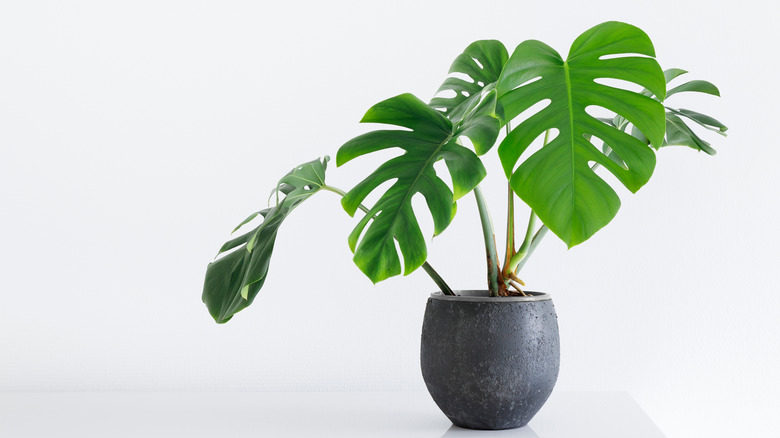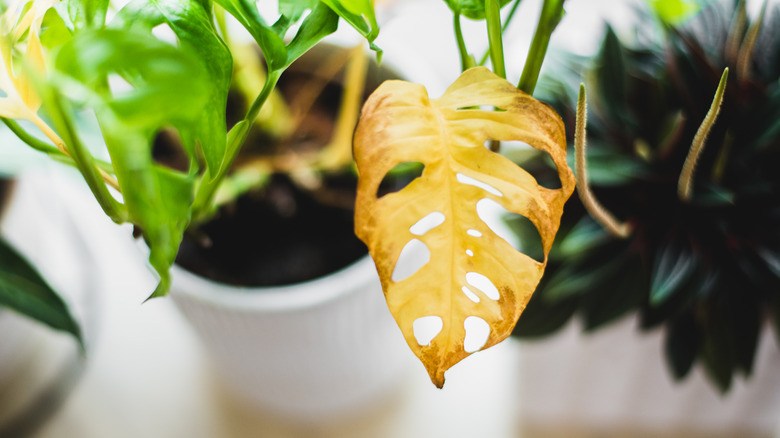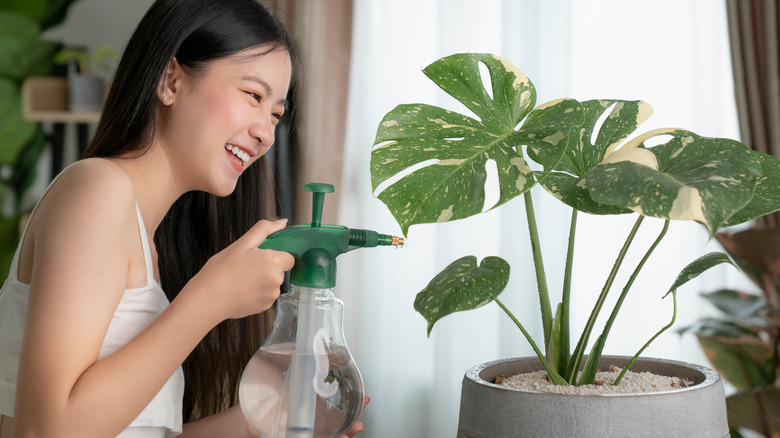How Often Should You Water Your Monstera Plant?
Monstera deliciosa is a trendy indoor plant that became popular for all the right reasons. It can be one of the more finicky houseplants, but once you know how to care for it, you'll be rewarded with large green leaves that make it feel like you live in a tropical paradise. It's often referred to as the Swiss cheese plant because its leaf fenestration creates large holes in the foliage. Your plant may not have vegetation that looks like a slice of Swiss cheese when you first get it, but once you place it in the right spot and keep it happy, you'll start to see the holes appear.
This plant requires lots of bright, indirect sunlight. You should choose a place in your home that allows at least 8 hours of light daily. The pot it's in also matters. A planter that's 2 to 3 inches larger than the root ball is the ideal size. The container should also have drainage holes so water doesn't get trapped and harm your plant. Another way to combat over saturation is with fast-draining soil. Monsteras also prefer lots of peat moss in the potting mix. Watering is tricky when caring for this plant because it's easy to accidentally add too much or too little. Since it's so picky, it can be hard to stick to a tight watering schedule. Instead, get to know your plant so you immediately notice the signs that it's thirsty.
Water every 2 weeks to keep soil moist
To make watering your monstera easier, consider these guidelines. First, a general rule is to quench their thirst every two weeks. However, you don't want to strictly follow this time frame because the specifications of your home need to factor in. For instance, sunlight makes the soil dry faster, and colder temperatures in winter can have a different kind of effect because even houseplants go dormant during this time to conserve energy. In a dormant state, their roots won't absorb moisture and nutrients from the soil at the same rate as when they need nutrition to grow new foliage. Therefore, you won't need to water your monstera during the winter months as often.
Looking for telltale signs that your plant is ready for a drink is another way to accurately time when you need to water it. Monsteras like their soil to be right in the middle of damp and dry. Too much water and they'll get root rot; too little and the foliage will get crispy. What you need to look out for is drooping. Once your plant's long stems and big leaves start to reach for the ground instead of the sky, it's time to give it water. A great way to create a schedule for your monstera is by keeping track of when you're quenching its thirst so you can figure out the average amount of days, and follow that time frame.
How to water your monstera
When it comes time to water your monstera, you need to give it just enough without drowning the roots. The usual way to do this is by adding to the top of the soil. First, move your plant to a sink. Slowly add water until it flows through the drainage holes of the pot. That's the sign that you've soaked it deeply. Then you should leave it sitting there so the excess water can drain. After a few minutes, it's safe to move back to the preferred spot in your home. Make sure to place a saucer underneath to catch any stray water drips.
Another method is to water from the bottom. This way is best if you're prone to overwatering your plants; it's also gentler and won't flush any nutrients from the soil. Add a few inches of water to a sink, tub, or large bucket, and then place your monstera in it. Leave it for between 5 and 20 minutes to soak up all the moisture. Once you notice that the water level is no longer dropping, you can place the plant back in its spot with a saucer.


